Following up on last week’s blog, we agree that the photo of the fertility ditch looks like a big hole (Gene). So we shall “fill” you in!
Here then is the process of making a fertility ditch. That big hole was just the first step – dig a three metre wide pit about sixty centimeters deep. If you look at last week’s photo, you can see the marked difference between the colour of the top layer (darker) and the lower layer (reddish). The soil is arranged around the outside perimeter of the pit (called a ditch).
Step 2: The hole is filled with compostable grasses and corn stalks and any ashes and available manure. This mulch/fertilizer is then covered with the soil, with the darker soil going in first and the richer red soil on top. Due to the filling, the “ditch” ends up higher than the surrounding area and must be shaped like an umbrella. For a bonus, some dark red soil from huge anthills in the area (minus the ants) can be added as a good root starter.
Step 3: The seeds are planted twenty centimetres apart and five centimetres deep. These ditches are good for three to four years after which it will be necessary to add some more mulch and manure.
So gardeners/farmers, here you have the “how to” along, with the inspiration provided by the attached photos as evidence that World Renew’s work in this community really is making a difference through these new gardening techniques! Very labour intensive, but with wonderful results! These photos were all taken at the same location – last week, during the ‘winter’ season and this past March, when the harvest was nearly ready.
Still on the subject of gardening, we would like to share another success story, based on a visit to the farm of Aaron Phiri. Aaron is one of the beneficiaries of this World Renew/CFGB project. He proudly and jubilantly showed his large garden and the variety of crops growing on it. Previously his garden was just a small vegetable patch for his family’s use, hand watered with cans carried from the nearby stream. However, now Aaron has a treadle pump. It was provided by RCZ Diaconia, World Renew’s local implementing partner, with the stipulation that he pay back 100% of the cost over time. He is pleased to announce that he has been able to re-pay the loan in full as a result of the successful sales from his expanded garden. This repayment will be used to purchase a new pump for another farmer with the same loan arrangement.
A treadle pump is a simple foot-powered water pump. It consists of two metal pedals that are connected to two cylinders with a piston in each. A natural walking motion on the two treadles operates the pump by shifting the weight from one pedal to the other, lifting the pistons. The installation of the treadle pump is easy and does not need any special tools. All household members are able to operate the pump, allowing farmers to make efficient use of family labour.
The pumps require very little maintenance and any required repairs can be done with minimal use of tools.
Aaron is a member of a gardening group that has formed as a subset of the farmers group that he belongs to. Sixteen keen gardeners meet every month to receive training on a variety of related subjects and to share their knowledge with each other. They have learned a lot about growing certain vegetables, how to market them and how to increase their yield. Three of these gardeners who have access to water now have a treadle pump and the others are saving for a down payment to obtain the same. To enhance this possibility they have formed a Village Savings and Loan group to raise funds that they can borrow from. The hope of these gardeners is to be able to feed their families for twelve months of the year instead of the average nine months reported at the beginning of the project.
It is such a privilege to be able to be part of a project that has so many good outcomes: better crops, soil preservation, better nutrition and other health aspects (next week), income generating activities and capacity building for the communities!
We are delighted to be used in God’s garden!


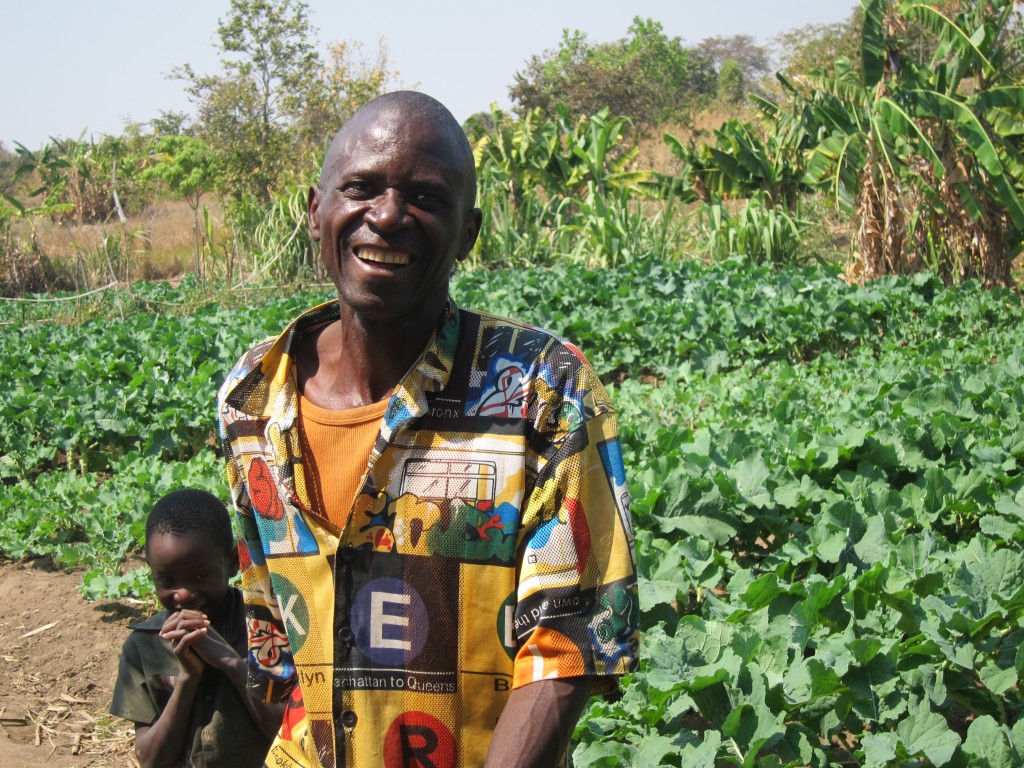
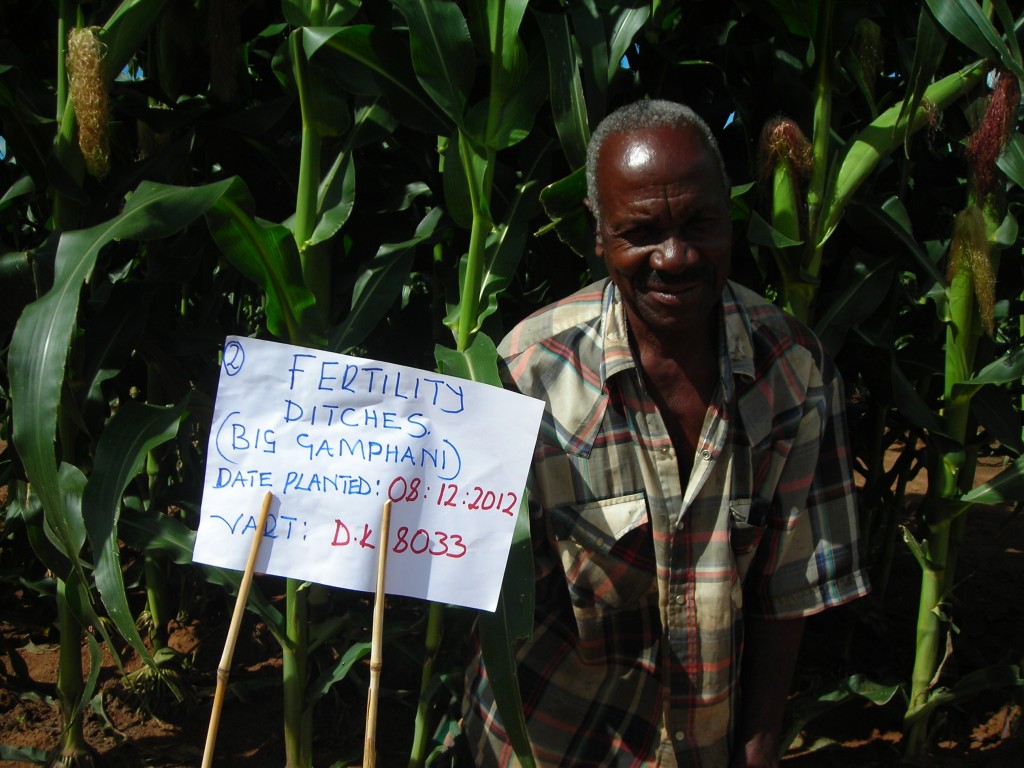
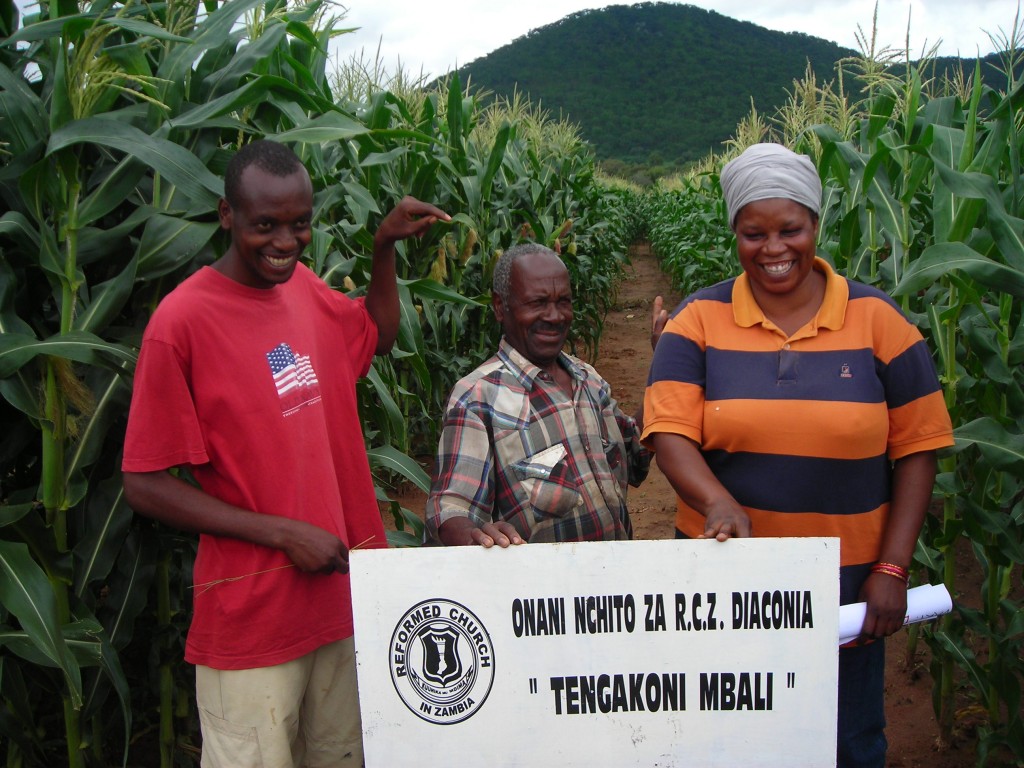
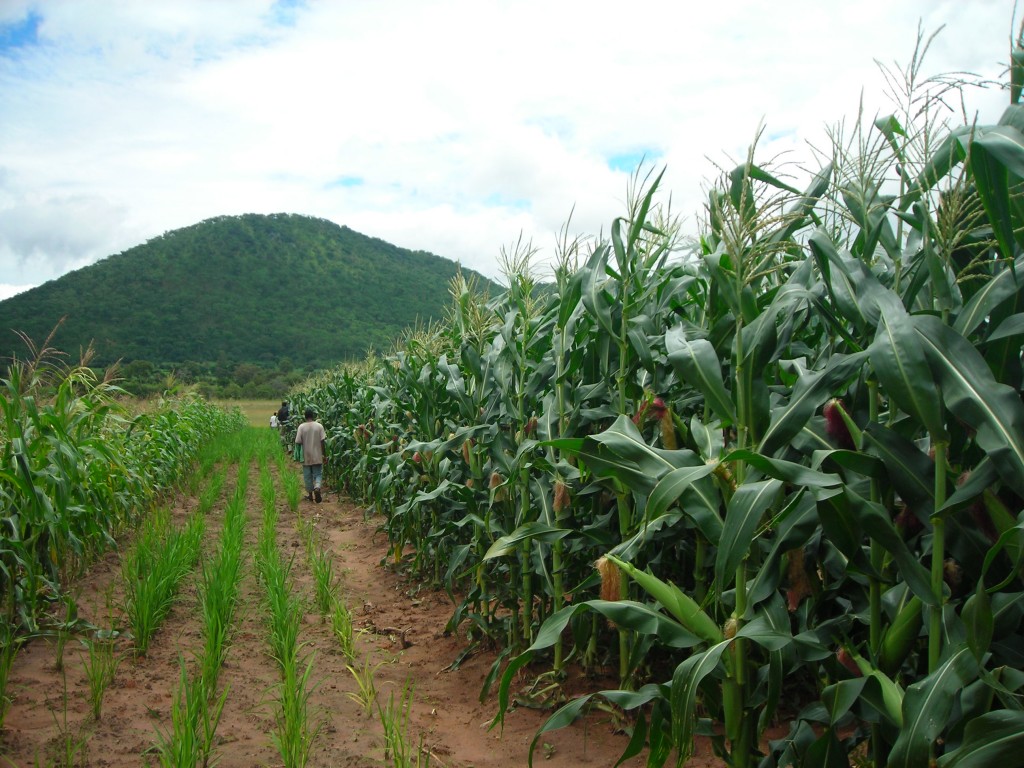
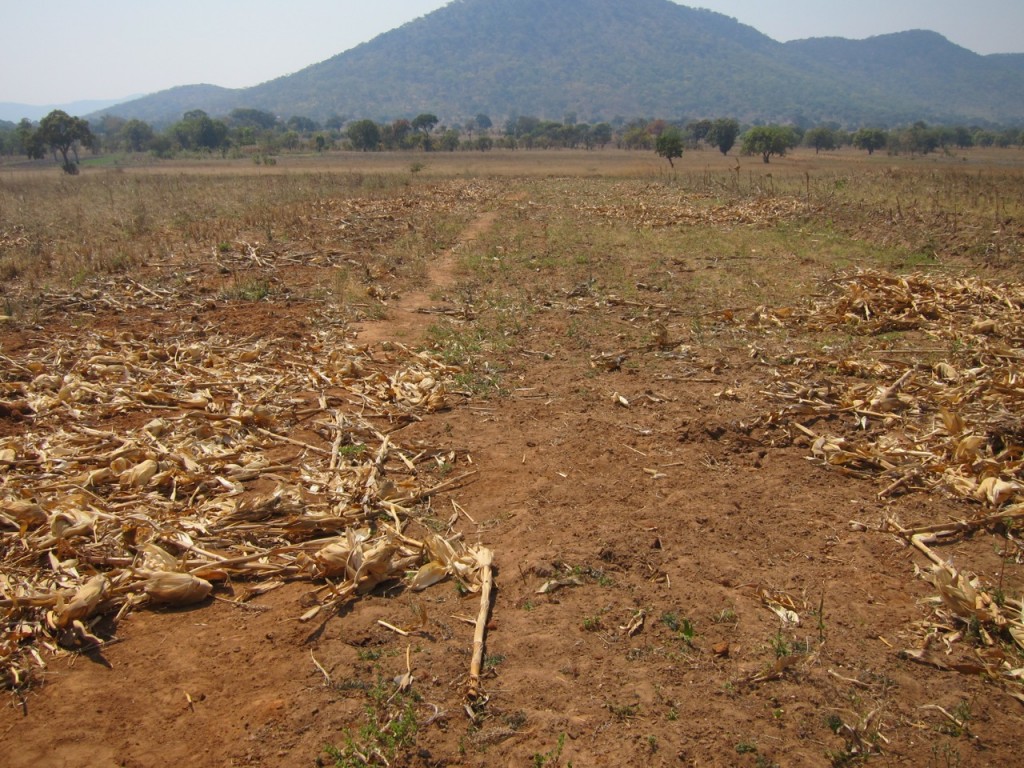
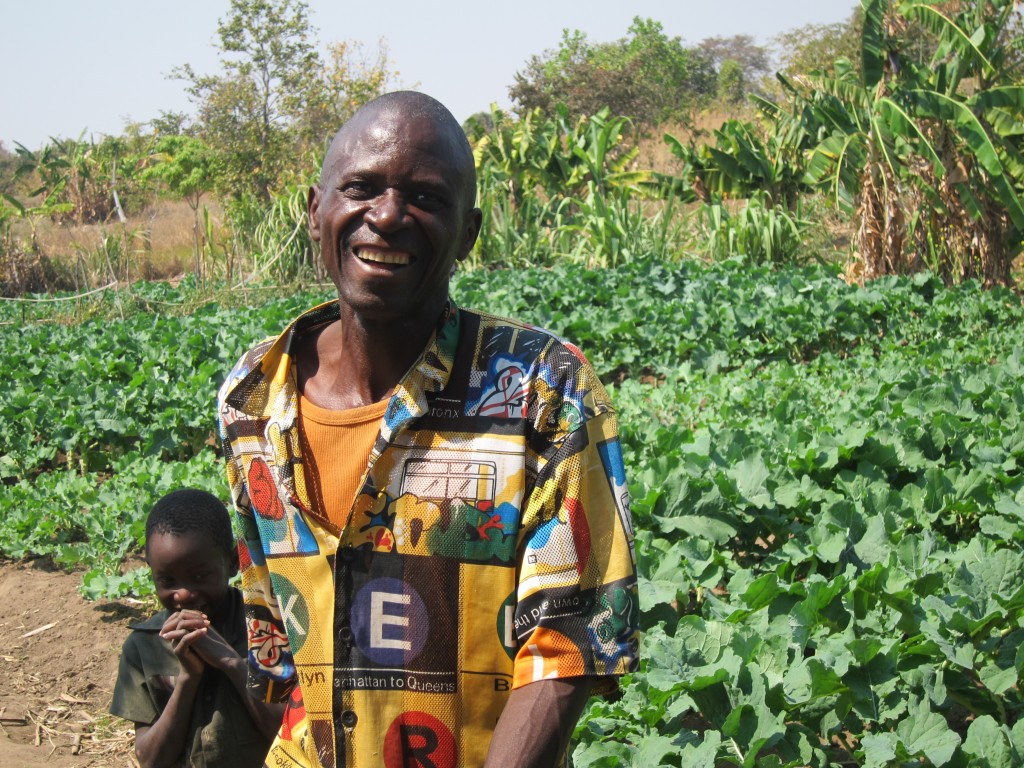
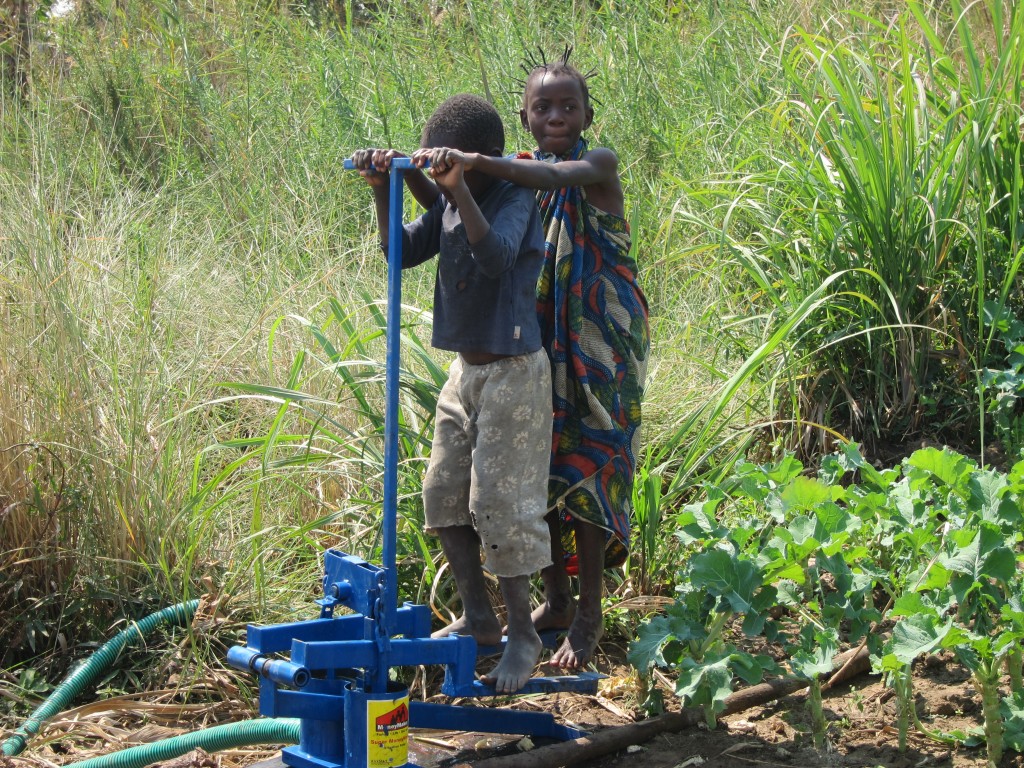
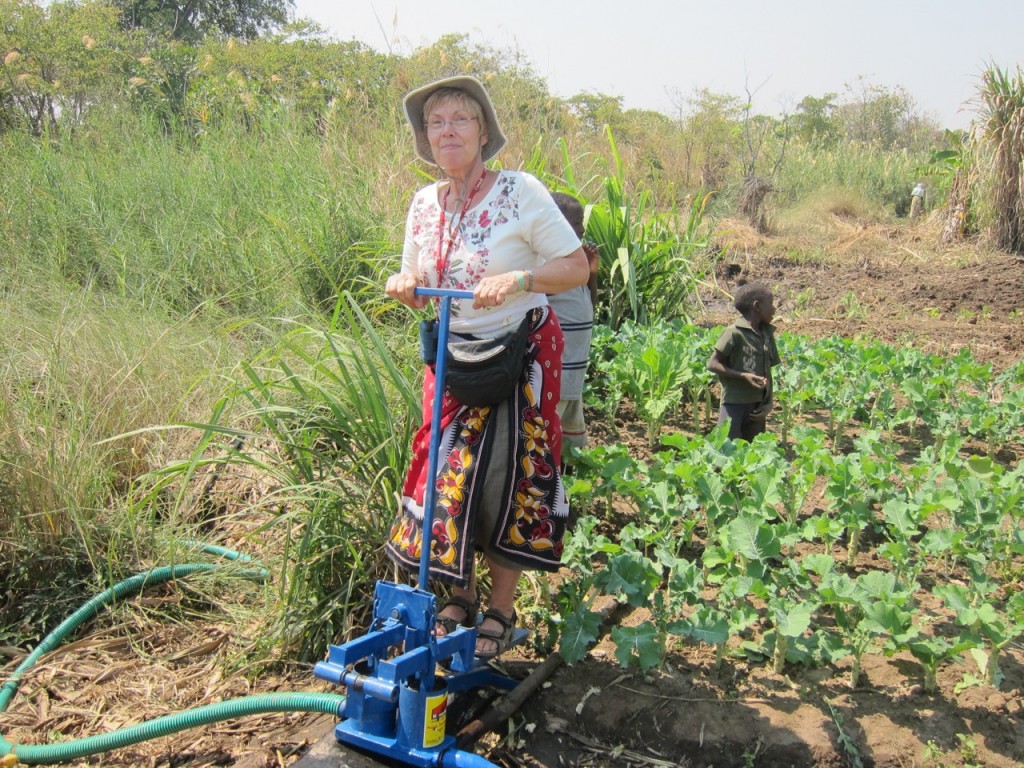
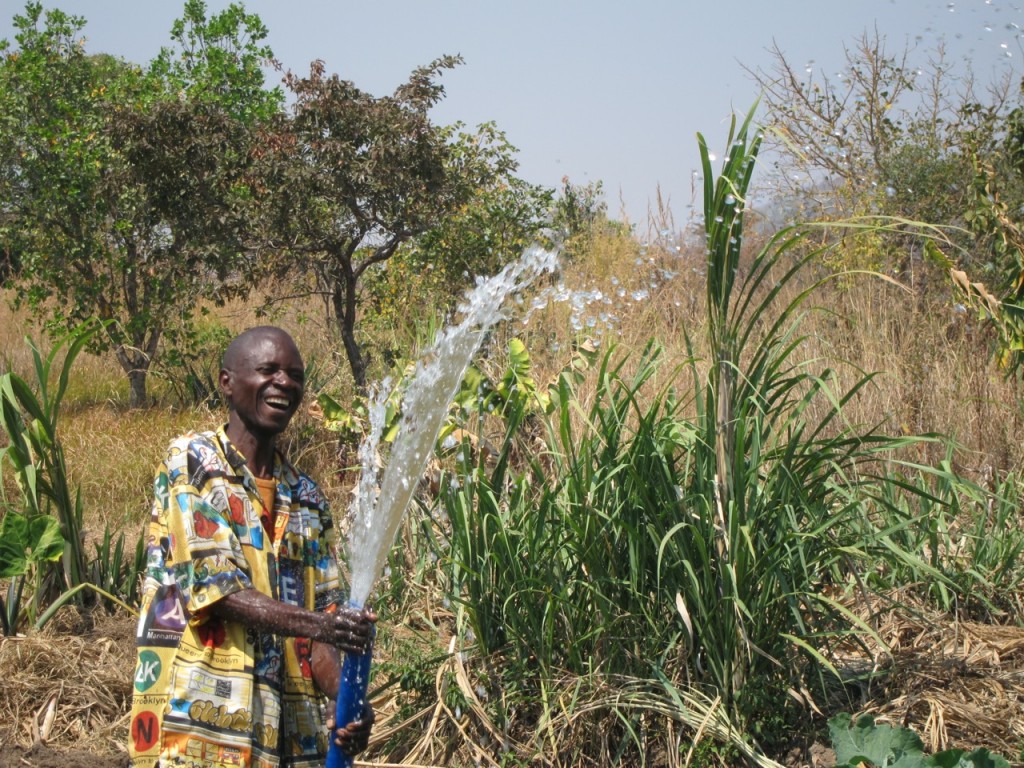

Great descriptions and pictures! Annie what a great substitute for your treadmill. Think about it, you could water your garden while you work out.
Praying for your safety and health as you continue to work in God’s garden.
great descriptions of the project you are involved in. These fertility pits, remind me of the yield of a mustard seed. I continue to pray for you and the projects you highlight.
Hi hsrry and Annie,
This farming method looks a lot like farming God,s way the common denominator being the mulch to. Trap the moisture.
Love you & are missing you
John
Wow Wow. Unbelievable the resourcefulness and the abundance of gardens. Looks beautiful. And the proud look on the faces of those benefiting from all their hard work. Will continue praying or you. Love Jane
Hi Annie
Love the pictures and your notes. If you love closely at the picture of you it looks like you are carrying a little child on your back. I know you must miss your grandchildren because now it looks like you are adopting one, lol
Praying for you and Harry always. Take care of that back of yours
Love and Blessings Ann Mc
How wonderful to see the progress! The crops look so healthy! The people look so happy!
I am sure your grandchildren are keeping your garden just as well maintained. 🙂
Thank you for sharing, we pray that you will be richly blessed, as you share with others.
How pleasing to see the good work the people are doing and the good harvest they are getting from the fertile soil. I keep praying for you in your work and the people you are working with.
May God’s grace be with you and remain with always,amen.
What a joy to see such beautiful and flourishing gardens!! It’s wonderful to read success stories and to know that you are helping to make a difference.
May God continue to bless you and your work in Zambia.
Now I can see how the fertility ditches work. What a huge difference in crops between the traditional and conservation farming with the side by side photo. It’s really great seeing the two children having fun in operating the treadle pump. And, what a water output from the blue hose resulting in some great looking corn.
Take care and be safe,
Gene